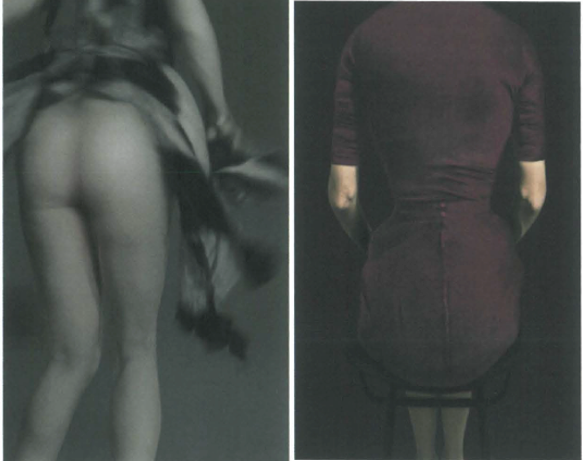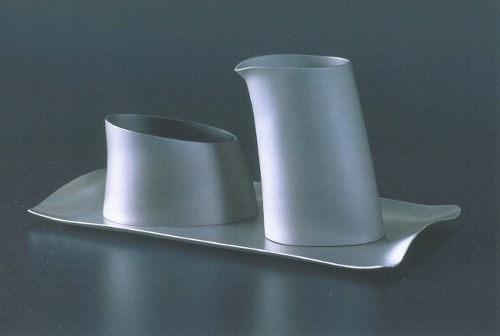
Mary Scott's recent exhibition of new digital photo-works at Hobart's Criterion Gallery marked a representational shift from the muted fleshy tones and the subtle painterly ambiguity of her earlier works. No longer in evidence were the artist's confronting and childlike portraits or other previous fragile translations of frozen tactility, such as those rendered in oils on glass during the mid to late 1990s.
Scott's new inkjet images, although seemingly more accessible and representationally less obscure than before, nonetheless presented subtle challenges and provocative proposals to the new, unwary or informed viewer. The studied playfulness of the Blue Joke triptych, the feigned submissiveness and propriety of Pinch, and the flirtatious display of costume and corporeality in Magnolia, all cleverly and seductively extend and underpin the artist's ongoing exploration of female sexuality, gender stereotypes, markers of desire, and associated visual, aesthetic and normative expectations.
Pinch, stands out, intentionally or otherwise, as a contemporary antithesis of Lewis Morley's iconic image from 1963 of a naked Christine Keeler, her modesty barely preserved by a fake Arne Jacobsen 'Ant' chair. In Scott's piece, the visual and physical imprisonment of her female subject wholly negates Morley's depiction of Ms Keeler's splayed legs and semi-naked display at the height of her public infamy. Headless, with an impossibly narrow waist of torturous proportions, the elongated figure in Pinch appears confined by the chair, the woman's legs being presumably held fast by a small unseen opening at the back of the seat.
Scott's has been, and remains, an autobiographical project. In particular, she contests accepted types of symbolism and iconography as they have pertained to the female body.
The artist knowingly employs and depicts the female body (usually her own), as one might utilise a dressmaker's doll; as an armature for ideologically driven fashions, both theoretical and corporeal, and as a model of containment that wears and bears its buttons and other fasteners as indicators of a permanently provisional state of identity.
The continued employment of digital technology to develop and produce much of her current work represents the deliberate maintenance of a strategy that Scott believes both permits and facilitates the temporary suspension of traditionally expressive and overtly personal concerns, while simultaneously allowing their incorporation, exploration and sublimation.
Although the 'gestural' was, by degrees, distanced in this show, crucial aspects of self and other autobiographical concerns remained writ large, albeit skilfully located between merged and flattened pixel layers and the smoothened results of printer/paper interaction and resolution.
Scott habitually employs digital mediation and techniques as a playwright might use the Brechtian distancing device of including a narrator within a play's plot and action. That is to say, as one who reminds the audience, by direct address and an actual presence, that they are, after all, bearing witness not to any simplistic slice of any immutable reality, but instead are viewers of a carefully staged and choreographed performance and tableau; a string or arrangement of representations which may at any time be unpacked and laid bare, their characters defrocked or unmasked.
Arguably, these new works constitute a revised mode of self-representation on the part of this artist. Previous alter egos and other reconstructed personae were largely replaced by cheekier, subversive and perhaps more engaging characters. However, bodies, body parts and flesh were once again encoded via clothing and costume; playfully exposed, cheekily extended and opportunistically and provocatively denuded.
Despite their two-dimensional physical status, Scott's recent works are skilfully nuanced and layered meditations and comments upon the continually shifting nature of public display. Taken collectively, the works represented a compelling performative questioning of the proscriptive and gendered roles operating at this current historical juncture.
Exploring the generic and generalised via the particular and personal has long been the trajectory of this compulsively dedicated artist. Previously largely visible only to the patrons of public institutions, Scott's screen-born propositions now rightly inhabit the volatile territory of the open market in some volume.












